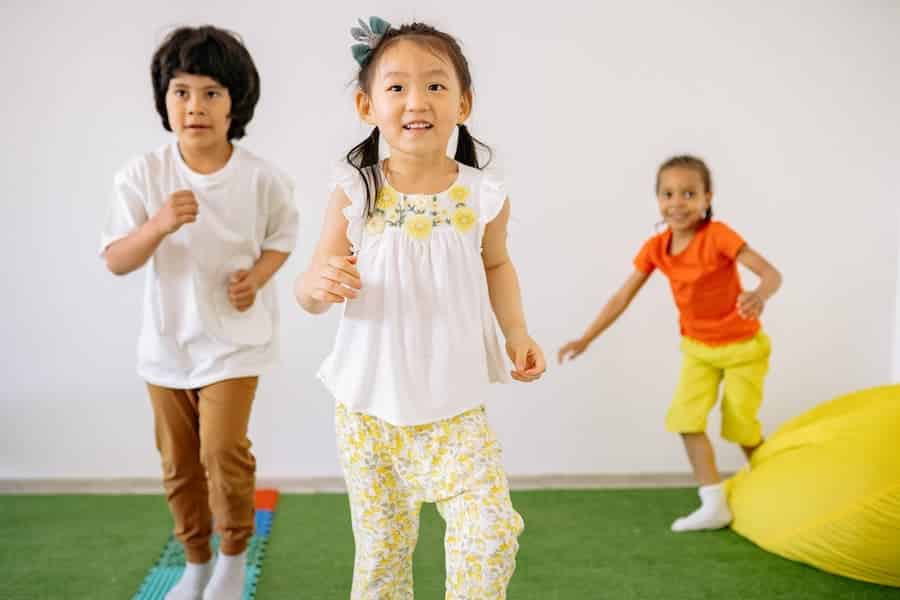We know that social distancing, schedule changes, quarantine, and all-around uncertainties can take their toll on everyone, especially our little ones. It may feel like things are spiraling out of hand. In these times, it’s important to take care of yourself and to teach kids how to establish self-care activities of their own.
Take your arms and reach them out wide. Now wrap them around your chest and give yourself a big hug. You have just completed a simple self-care activity. Doesn’t that feel good?
What is Self-Care?
Self-care is the practice of taking action to preserve or improve one’s own health, well-being, and happiness, particularly during periods of stress. Psychology Today adds that self-care is “the joy of recharging our tanks”. For adults, it can include going to the gym, a concert, or experiencing a quiet night at home. For children and young students there are easy activities that can help with their overall enjoyment of life and help them shrug off stress.
Self-Care Activities for Students

Go Outside
The weather can dictate how much we want to be outside, but studies show that being outside, even for a little bit, has massive benefits. If it’s snowing, have your little ones build a snowman. If it’s raining, build a paper boat and float it down the street. Or, if the sun is shining and the weather is nice, go for a walk and enjoy the world without electronics. Being outside can lower the stress hormone cortisol, raise endorphins, decrease depression and anxiety, and strengthen the immune system. Your self-care activity for students doesn’t have to be expensive or elaborate when it’s right outside your door.
Let It Rain
Sometimes the stress builds up inside and makes students (and adults) feel like they might burst. Instead of trying to hold it all in, tell your kids that it’s okay to let it out. A good cry just might be the relief that is needed. Talk with your children about their emotions and why they are feeling this way. After the crying has finished, check on them again. Crying is shown to improve spirits and mood, stimulate the production of endorphins, and restore emotional balance.
Laughter Is the Best Medicine
Doctor Patch Adams said it best: Laughter enhances the blood flow to the body’s extremities and improves cardiovascular function. Laughter releases endorphins and other natural mood elevating and pain-killing chemicals, improves the transfer of oxygen and nutrients to internal organs. Laughter boosts the immune system and helps the body fight off disease, cancer cells as well as viral, bacterial and other infections. Being happy is the best cure of all diseases.
While telling someone who is stressed or overwhelmed to just “be happy” isn’t going to work (and possibly met with a severe glare), the facts are that laughter does help with elevating someone’s mood and reduces stress. Tell a joke to get that grin. Watch a silly show or movie to turn that frown upside down. A good chuckle, belly laugh, hy-yuck yuck, hee hee, ha ha will help alleviate any dampened mood. As far as self-care activities for students go, this one is easy and doesn’t cost a dime…only a smile.
Dance Your Cares Away

Sometimes words alone cannot express what’s going on inside. Our minds and mouths don’t seem to work as one and we are left without the ability to convey what is really going on. So what can children and adults do when words fail us? We can dance. Not a dancer? Dance anyway! No choreography? Dance anyway! Never took lessons? DANCE ANYWAY! Dancing isn’t just for the ballroom, the stage, the movies, or the superstars. Dance can help everyone to let loose and free themselves of their stress and worries.
Not only does dancing lower stress, but it’s also a workout that burns calories and improves cardiovascular health (that’s what’s called a two-fer). If you can’t seem to get your child to a dance studio, there are plenty of dancing games at home that the whole family can use. Games, such as Just Dance, have a wide variety of songs for all ages, so you can get that self-care for your students without them even knowing it. If a gaming system is out of the question, just pick any song and get groovin’! After the moves have been busted and the dance floor cleared, you will see a much-improved attitude and overall feeling in the room.
Eat Healthy Foods
Your students might be tired of hearing “eat your vegetables” or listening to talking points on the five food groups, but the truth is that healthy eating does fall in the realm of self-care. We aren’t talking about going on a diet, but rather taking into consideration what’s being put into our bodies. If a student is observed with stress or fatigue, a proper meal may be the key to lifting their spirits and energy levels.
Stress can affect how your body processes foods and absorbs water. This can lead to feelings of fatigue or lagging. Adopting a proper meal plan can greatly improve spirit and health. A variety of fruits and vegetables along with proper hydration is a self-care activity for students that everyone can get behind.
Find Your Path
While there are many options of self-care activities for students, it’s ultimately up to you and your students to determine the best course of action that will yield the best outcome. No one thing works for everyone, and every self-care activity will not work for each and every instance. Like your diet, go through a variety of things to find out what benefits you and your kids the most. What works one day might not work the next, so switch it up and keep things interesting. Stress rears its head in very unusual and unpredictable ways, so be ready to challenge and defeat it, no matter where it turns up.
Soul Shoppe provides social emotional learning programs for schools. homes, and businesses.
You May Also Like:
Virtual Social Emotional Learning Activities


